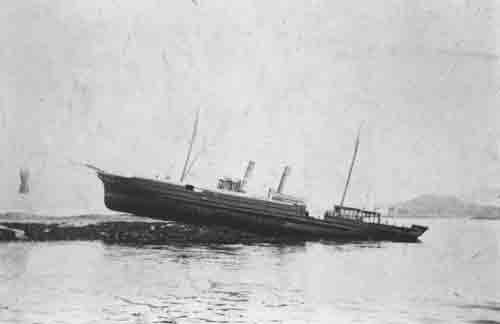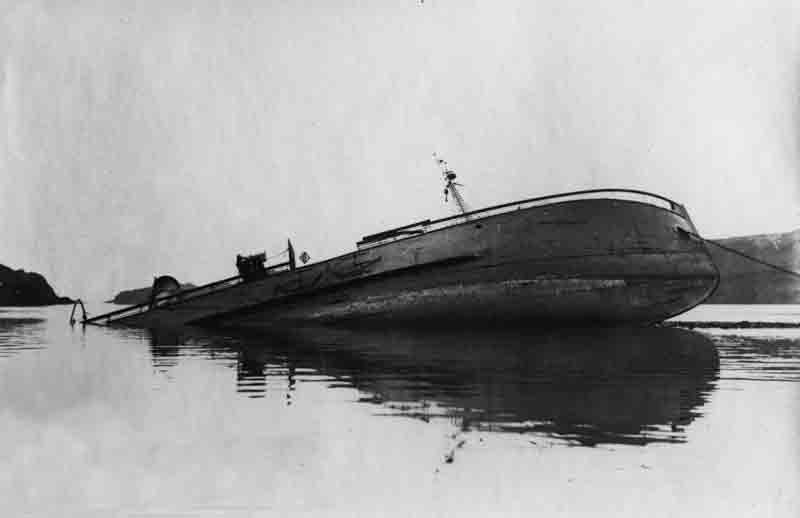Launched from the yard of Porsgrund MekaniskeVaerksted the steel steamship Gokstad was launched in 1909 for her first owners Grefstad and Herlofson of Arendal. She measured 179.3’x 29.7’ x 13.5’ and weighed 710 gross tons, 390 net tons. She was powered by a triple expansion steam engine by Portsgrund Mekaniske delivering 99 net horse power. She was sold to A O Lindvig of Kageroe in 1913 who renamed her Rigg before she was purchased by her final owners J M Johanessen of Bergen in 1915 who renamed her Ringholm.
The Ringholm departed South Shields Friday 20th April 1917 at 5:30am bound for Skien with a cargo of 800 tons of coal. She was commanded by Captain Casper Christian Piene with a full compliment of fifteen crewmen. At 7am that morning she passed the pierhead where they dropped off the local pilot. Captain Piene set his course based on the instructions given by Admiralty heading north close to the English coastline. By 9:10am they passed the Farne Islands two miles off shore. Here the course was adjusted to NW3/4W to pass close to St Abbs Head. At 3.05pm, without warning, the ship was rocked by a massive explosion on the starboard side. They were four and a half miles off St Abbs Head. A huge water spout reared up ripping the side of ship and the decking above the explosion. A periscope was spotted speeding away from the ship’s position. Clearly they had been hit by a torpedo. Later reports from the German U-boat UC-41 commanded by Kapitanlieutnant Kurt Bernis show they were responsible for the attack. They also sank eight other vessels on the same sortie and the mines laid during the voyage were responsible for a further loss of two British fishing vessels later.
The Ringholm was sinking quickly so, with no time to launch the lifeboat correctly, the port lifeboat was cut down and eleven crewmen jumped aboard. The boat was half filled with water but they managed to pull away from the sinking ship safely. The ship sank by the bow, with stern raised high in the air less than two minutes after the torpedo hit. The steward and the cook couldn’t reach the lifeboat in time so jumped overboard but unfortunately they were swept and away from the ship and were lost. A third crewman, Albert Westerlund, had been killed in the initial explosion. The crew in the boat circled the area three times and picked up junior seaman Sigfried Gustavsen who was clinging to a wooden hatch cover. Sadly he was already suffering from the severe cold and passed away before help arrived at the scene. Fifteen minutes after the Ringholm sank a local fishing boat arrived and soon after the St Abbs lifeboat also reached the survivors. The lifeboat took the weaker of the crew swiftly to shore and the fishing boat brought the remainder of the crew ashore.
The wreck of the Ringholm lies in position 55°54.073’N, 01°58.769’W rising 8 metres from the seabed at 60 metres oriented 120°/300° degrees. She is basically in tact sitting upright and was identified when crockery belonging the owners and the ship’s bell were recovered from the wreck.






























